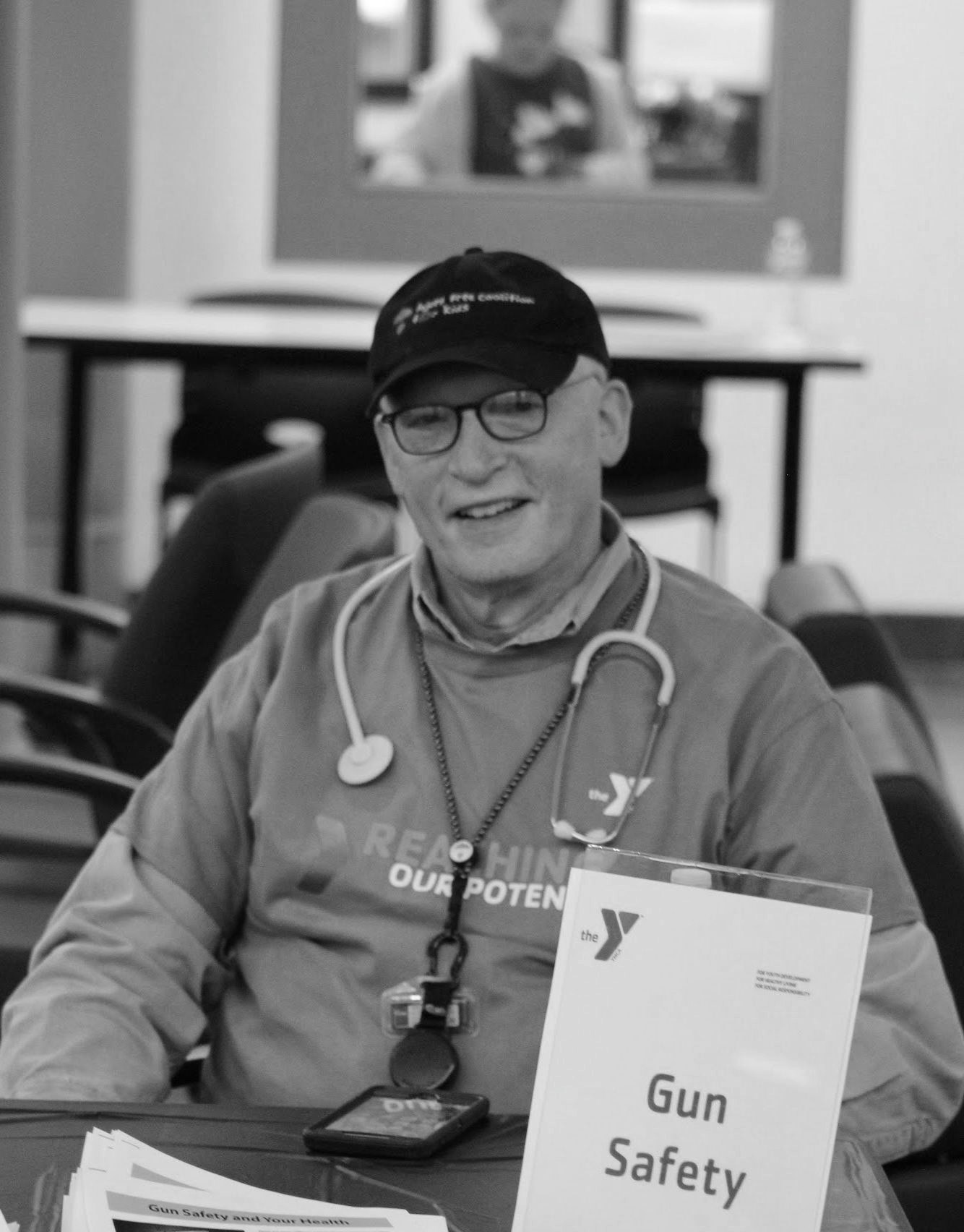My bromance with John Wood II began the first day of our pediatric surgery residency at Columbia Presbyterian Hospital in New York City, in the late 1970s. The atmosphere there was cutthroat: of the 12 of us, only five of us would make it through the year.
“We could make this the worst year, competing the way they want us to, or we could just help each other out all the time,” John said to us, once we’d all gathered in the library. “And in the end, we may not have a job, but we’ll have 11 friends.”
I knew then that we were destined to become close friends. I fell in love with the guy right there.
We were on call together the night of November 2, 1981, when the phone rang: it was John’s wife, who was in her first trimester of pregnancy and having trouble with nausea. Dipping into the lounge’s industrial-size vat of peanut butter, John loaded up a few packets of crackers, handed me his beeper and said he’d be back soon.
A few minutes later, I got a beep notifying us of a trauma patient coming into the emergency department. I ran down and saw John being rushed in on a gurney. A 15-year-old had accosted him outside the emergency room doors and asked him for money. When John pulled only crackers out of his pockets, the teenager shot him in the chest.
We worked hard to get him back. We got him on bypass, but there was no brain activity. John was gone and there was nothing we could do.
John’s death changed my life — it changed so many people’s lives at Columbia.
I was the president of the house staff for the Columbia Presbyterian campus at the time. After John’s funeral, our Chief of Surgery called me and said he had someone he wanted us to talk to. It was Sarah Brady, the wife of White House press secretary Jim Brady, who had been shot in an assassination attempt on President Reagan six months earlier.
Sarah Brady compared what we were seeing with gun violence to what the famous Army surgeon Walter Reed had seen in Cuba during the Spanish Civil War, when he was charged with treating soldiers’ yellow fever. Reed didn’t have anti-virals or antibiotics, but by focusing on the vector of infection, the mosquito, through mitigations like long sleeves and mosquito nets, he reduced the amount of yellow fever by 98 percent.
I took that very much to heart. It drove me to look for gun violence solutions.
As I began working and teaching in Pittsburgh, I emphasized to my students and residents that it was the physician’s responsibility to talk to patients about gun ownership. I encouraged them to approach the gun-owning patients we encountered in the clinic or in the emergency department in a non-inflammatory way: Ask them to evaluate their own sense of risk with a gun in the home. Risk is elevated when you have an inquisitive toddler poking around, a depressed teen, an angry spouse. Research shows that the most effective way to prevent children from accessing firearms is making sure all guns are stored unloaded, locked and separate from ammunition.
Gun violence prevention is seen as controversial in a lot of injury prevention programs. But we’re not anti-gun or anti-gun owners, we’re anti-gun violence. If gun owners don’t store or own a gun responsibly, then it’s better out of the house.
Since 2001, I’ve worked as a pediatric trauma surgeon and professor at UMass Medical School in Worcester, Massachusetts, where we established an Injury Prevention Center, as well as a curriculum to prepare practitioners for these conversations. Our toolkit includes questions a doctor should ask patients and parents about gun access, as well as questions about gun safety healthcare providers may hear from a gun owner.
Over the years, some patients have expressed a desire to surrender their guns, but they didn’t have a way to do so safely. That’s why I helped start a gun buyback program, Goods for Guns, first in Pennsylvania and then in Massachusetts. Now we’re part of a consortium of programs in 16 states that are doing gun buybacks on the same day. Just this year, so far, 58 have been conducted around the country.
Recently, after 36 years as a pediatric trauma surgeon, I hung up my scalpel and retired from practicing medicine. Without my injury prevention and gun violence prevention work, I’m sure I would have burned out a long time ago. Advocacy is a great opponent of burnout.
I know that we could buy back guns from here to the next century and never have them all back. Still, we have to recognize that some of the 13,000 we’ve collected so far could have caused a lot of harm, if someone obtained it who was a danger to themselves or others. Some would have caused another John Wood, for sure.
That’s enough for me.
by Dr. Michael Hirsh, as told to Sarah J. Robbins
